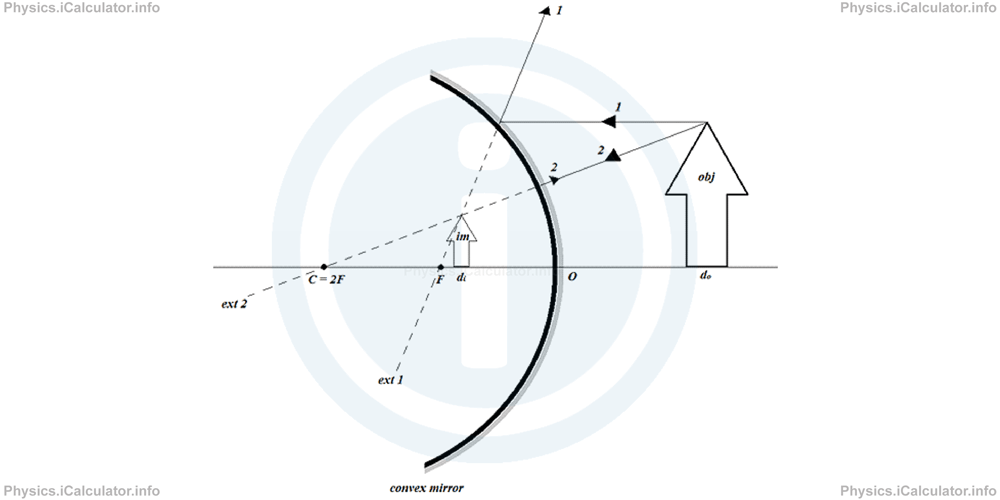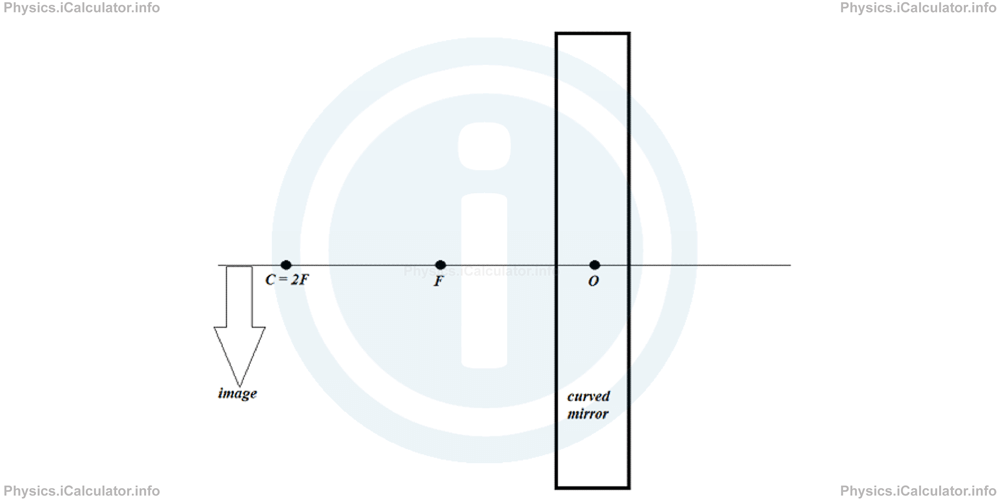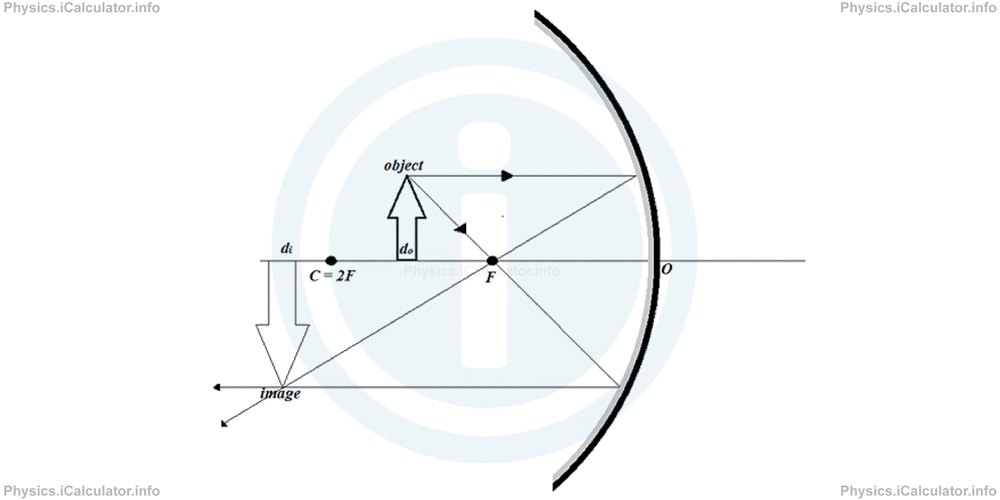Menu
Physics Lesson 12.8.5 - Image Formation in Convex Mirrors
Please provide a rating, it takes seconds and helps us to keep this resource free for all to use
Welcome to our Physics lesson on Image Formation in Convex Mirrors, this is the fifth lesson of our suite of physics lessons covering the topic of Mirrors. Equation of Curved Mirrors. Image Formation in Plane and Curved Mirrors, you can find links to the other lessons within this tutorial and access additional physics learning resources below this lesson.
Image Formation in Convex Mirrors
Since in convex mirrors the centre of curvature and focus are on the other side of reflecting surface, there is only a single case of image formation, as there are no divisions on the object's placement side.
We use two rays to build up the image in convex mirrors. The first ray starts from the extremity of the object, moves parallel to the principal axis and is reflected in such a direction that its extension passes through focus. The other ray originates from the object's extremity, points to the centre of curvature but it turns back because it cannot penetrate through the mirror. However, we take its extension to build up the image, as the image is formed at the meeting point of the two extensions of the abovementioned rays as shown in the figure.

As you can see from the figure, the image is diminished, it is formed on the other side of the mirror, closer than focus and it is erect (upright). Since the image is not obtained from the reflected rays but from their extensions instead, it is a virtual image.
Example 1
The image of an object is formed in a curved mirror as shown in the figure.

- What kind of mirror is it?
- Where is the object located approximately?
Take the object as placed on the principal axis.
Solution 1
- The mirror is concave, as in convex mirrors the image is always formed closer to the mirror than focus.
- The situation shown in the figure represents the third case of image formation in concave mirrors as the image as the image is formed at a distance that is greater than the centre C of curvature. This means the image is enlarged and inverted. Therefore, the object is located between the centre of curvature and focus, in erect position as shown in the figure below.

You have reached the end of Physics lesson 12.8.5 Image Formation in Convex Mirrors. There are 8 lessons in this physics tutorial covering Mirrors. Equation of Curved Mirrors. Image Formation in Plane and Curved Mirrors, you can access all the lessons from this tutorial below.
More Mirrors. Equation of Curved Mirrors. Image Formation in Plane and Curved Mirrors Lessons and Learning Resources
Whats next?
Enjoy the "Image Formation in Convex Mirrors" physics lesson? People who liked the "Mirrors. Equation of Curved Mirrors. Image Formation in Plane and Curved Mirrors lesson found the following resources useful:
- Convex Feedback. Helps other - Leave a rating for this convex (see below)
- Optics Physics tutorial: Mirrors. Equation of Curved Mirrors. Image Formation in Plane and Curved Mirrors. Read the Mirrors. Equation of Curved Mirrors. Image Formation in Plane and Curved Mirrors physics tutorial and build your physics knowledge of Optics
- Optics Revision Notes: Mirrors. Equation of Curved Mirrors. Image Formation in Plane and Curved Mirrors. Print the notes so you can revise the key points covered in the physics tutorial for Mirrors. Equation of Curved Mirrors. Image Formation in Plane and Curved Mirrors
- Optics Practice Questions: Mirrors. Equation of Curved Mirrors. Image Formation in Plane and Curved Mirrors. Test and improve your knowledge of Mirrors. Equation of Curved Mirrors. Image Formation in Plane and Curved Mirrors with example questins and answers
- Check your calculations for Optics questions with our excellent Optics calculators which contain full equations and calculations clearly displayed line by line. See the Optics Calculators by iCalculator™ below.
- Continuing learning optics - read our next physics tutorial: Lenses. Equation of Lenses. Image Formation of Lenses
Help others Learning Physics just like you
Please provide a rating, it takes seconds and helps us to keep this resource free for all to use
We hope you found this Physics lesson "Mirrors. Equation of Curved Mirrors. Image Formation in Plane and Curved Mirrors" useful. If you did it would be great if you could spare the time to rate this physics lesson (simply click on the number of stars that match your assessment of this physics learning aide) and/or share on social media, this helps us identify popular tutorials and calculators and expand our free learning resources to support our users around the world have free access to expand their knowledge of physics and other disciplines.